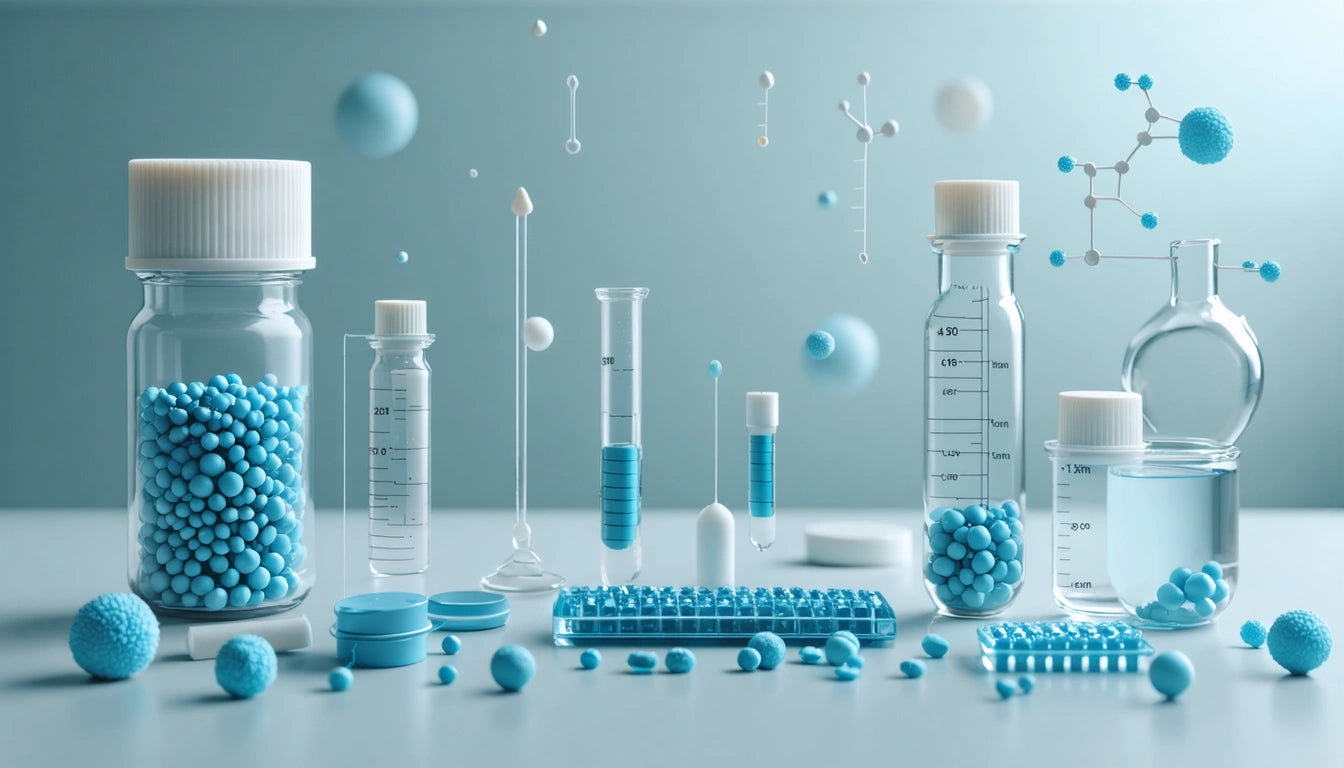Table of Contents
Understanding the Conversion: Nanograms to Milligrams and Vice Versa
Accurate measurement is crucial in scientific research, pharmaceutical dosing, and cannabis testing. Understanding how many ng in a mg (nanograms in a milligram) forms the foundation of precise calculations across multiple industries. This guide breaks down these metric system conversions and their practical applications, particularly in cannabis testing and dosing.
Nanograms and Milligrams: Understanding the Basics
Nanograms (ng) and milligrams (mg) are units of mass in the metric system that differ by a factor of one million. While both measure extremely small quantities, they serve different purposes in scientific and medical contexts.
A milligram is one-thousandth of a gram (1 mg = 0.001 g). This unit commonly appears in medication dosing, supplement facts, and food nutritional information. Meanwhile, a nanogram is one-billionth of a gram (1 ng = 0.000000001 g), typically used for measuring trace amounts in laboratory settings, drug tests, and ultra-precise pharmaceutical applications.
The Conversion Formula: How Many ng in mg
The fundamental conversion between nanograms and milligrams follows a simple mathematical relationship:
1 mg = 1,000,000 ng
Therefore, to convert milligrams to nanograms, multiply the mg value by 1,000,000:
ng = mg × 1,000,000
Conversely, to convert nanograms to milligrams, divide the ng value by 1,000,000:
mg = ng ÷ 1,000,000
For example, 0.5 mg equals 500,000 ng, and 50,000 ng equals 0.05 mg.
Practical Applications of ng to mg Conversions
These conversions play a critical role in several fields:
- Drug Testing: Cannabis testing often reports THC levels in ng/mL, as explained in this article on drug test cutoff levels.
- Pharmaceutical Dosing: Some medications require precise nanogram dosing, especially for potent compounds.
- Environmental Testing: Detecting trace contaminants often involves nanogram-level measurements.
- Cannabis Product Labeling: Products may list cannabinoid content in milligrams while testing is conducted at the nanogram level.
When packaging cannabis products for retail or wholesale distribution, proper labeling with accurate measurements is crucial. Many producers use high-quality mylar packaging solutions for larger quantities that help preserve product integrity while displaying important dosage information.
Relevance in the Cannabis Industry
In the cannabis industry, understanding how many mg in ng and vice versa is particularly important for:
Drug Testing Standards
Cannabis drug tests typically use nanograms per milliliter (ng/mL) as the standard unit. A common cutoff level is 50 ng/mL for THC metabolites, as detailed in this explanation of ng/mL measurements. Understanding these measurements helps consumers interpret test results accurately.
Product Dosing
Cannabis products typically list THC and CBD content in milligrams. For example, an edible might contain 10 mg THC per serving. However, when testing these products in labs, measurements often start at the nanogram level before conversion to the consumer-friendly milligram notation. Understanding proper edible dosing requires knowledge of these measurement principles.
Common Conversion Mistakes to Avoid
When working with nanogram to milligram conversions, several common errors can occur:
- Decimal Point Errors: Misplacing a decimal point can lead to thousand-fold dosing errors.
- Confusion with Concentration Units: Mixing up ng/mL with mg/mL can result in significant miscalculations.
- Overlooking Unit Prefixes: Confusing nano (n) with micro (μ) or milli (m) leads to major conversion mistakes.
- Calculator Input Errors: When converting large numbers, incorrect input can cause serious calculation errors.
Always double-check calculations, especially when they involve multiple unit conversions. For cannabis professionals, understanding milligram measurements is essential for accurate product formulation.
Measurement Tools and Best Practices
Accurate measurement requires appropriate tools and techniques:
Laboratory Equipment
Professional measurements at the nanogram level require specialized equipment:
- High-performance liquid chromatography (HPLC)
- Mass spectrometry
- Immunoassay testing kits
- Precision analytical balances
Digital Conversion Tools
For quick calculations, digital tools can help:
- Scientific calculators with exponential functions
- Online conversion calculators
- Laboratory software with built-in conversion utilities
- Spreadsheet formulas for batch conversions
Cannabis manufacturers must ensure their measurement protocols follow industry standards, as explained in this guide to THC measurement.
Future Measurement Standards in Medical Cannabis
As the cannabis industry evolves, measurement standards continue to develop. Future trends include:
- Standardized Testing Protocols: Industry-wide standardization of testing methodologies to ensure consistent results across laboratories.
- Consumer Education: Improved labeling and resources to help consumers understand potency measurements.
- Precision Dosing Technologies: New devices that allow for more precise dosing at the consumer level.
- Expanded Cannabinoid Profiling: More detailed measurements of minor cannabinoids beyond THC and CBD.
Understanding how many ng in mg will remain fundamental as these advancements continue. For those in the cannabis industry, staying informed about measurement standards and conversion principles ensures compliance and product consistency.
Whether you're a laboratory technician, cannabis producer, or medical professional, mastering these conversions is essential for accuracy in an industry where precision matters. The difference between nanograms and milligrams might seem small on paper, but in practice, it represents the difference between effective treatment and potential miscalculation.











Leave a comment
All comments are moderated before being published.
This site is protected by hCaptcha and the hCaptcha Privacy Policy and Terms of Service apply.